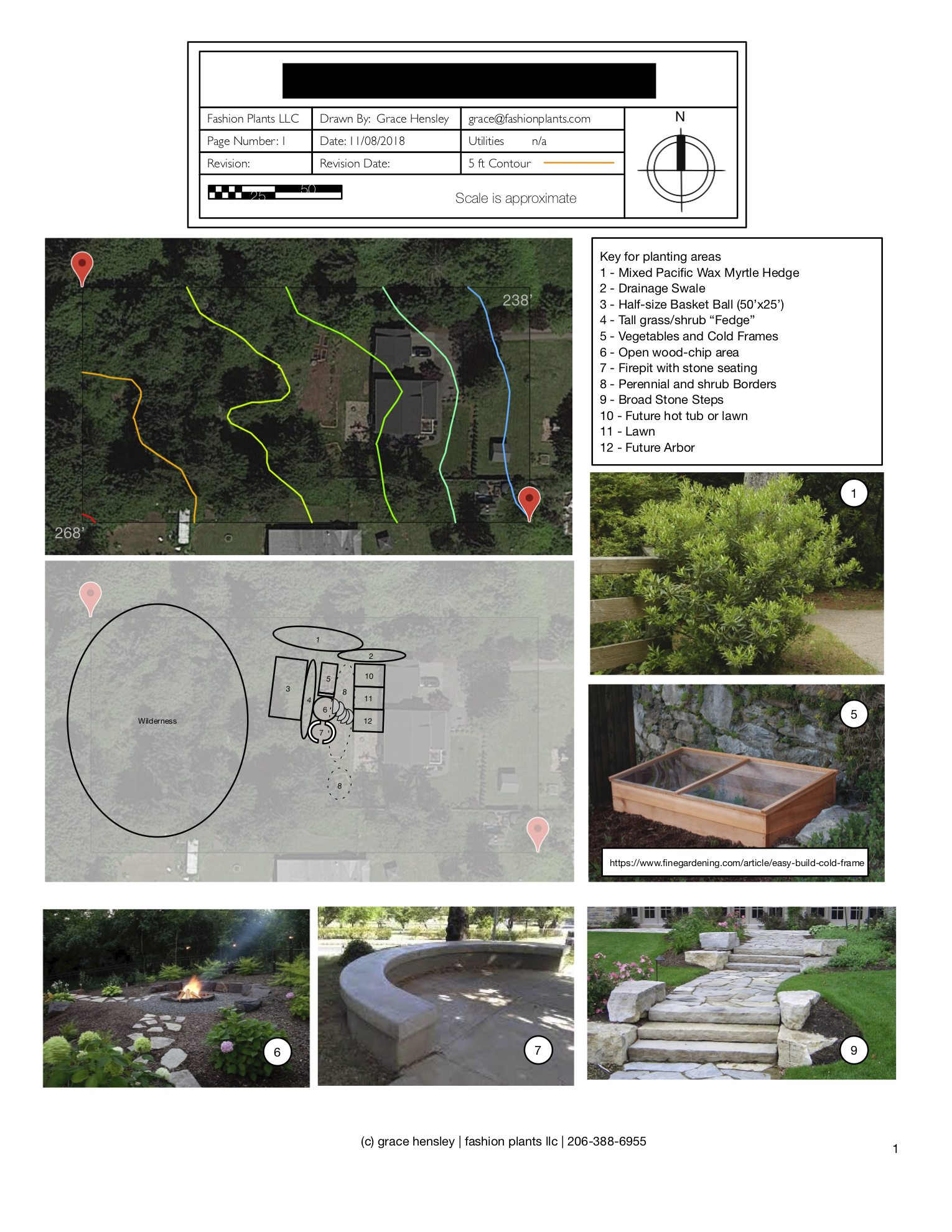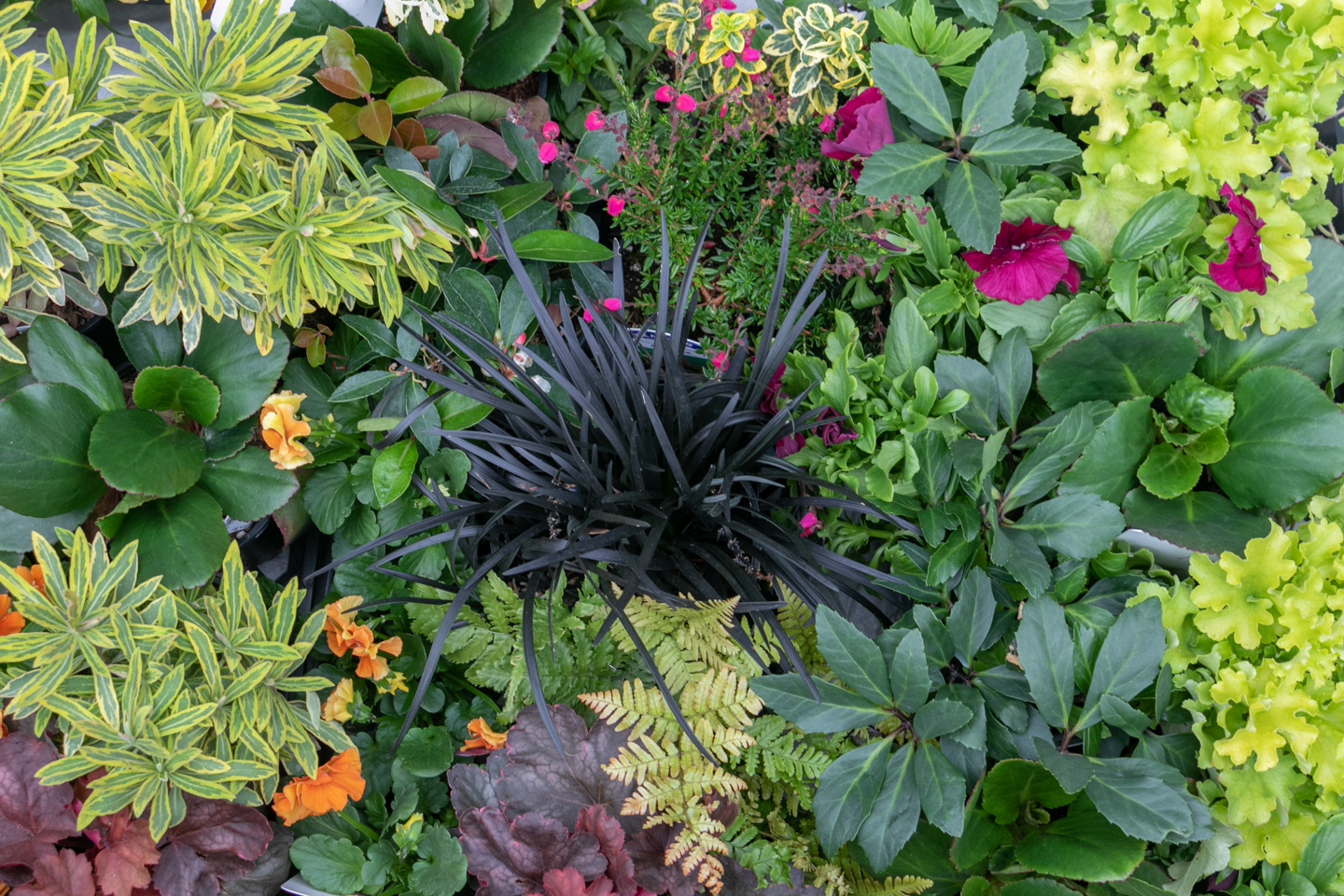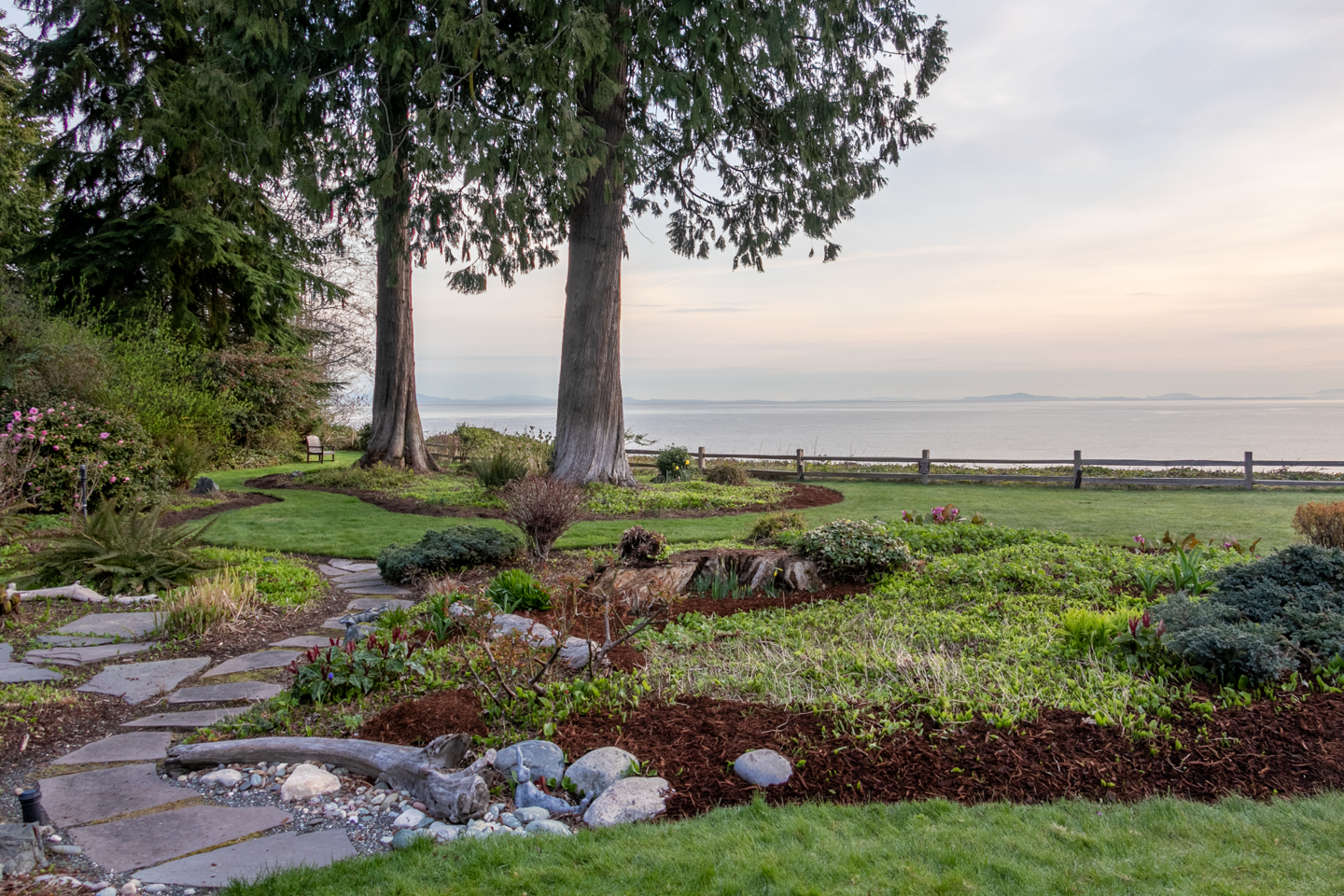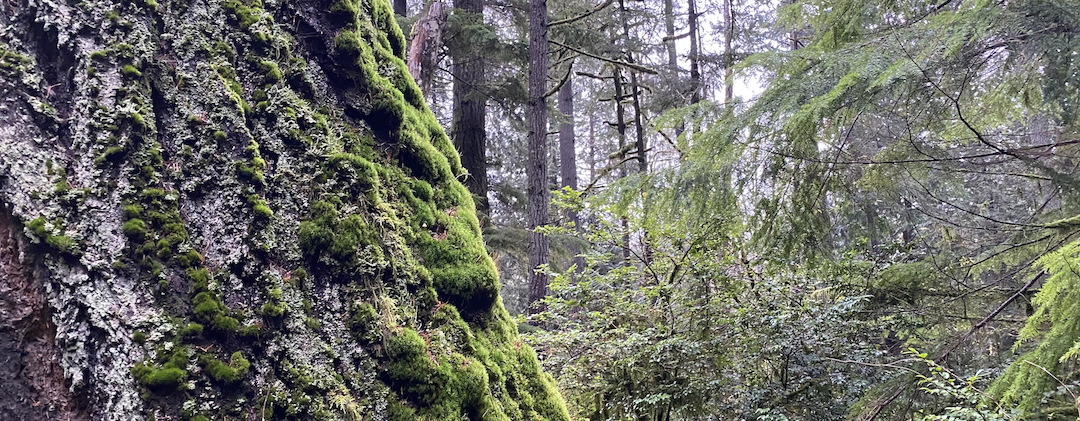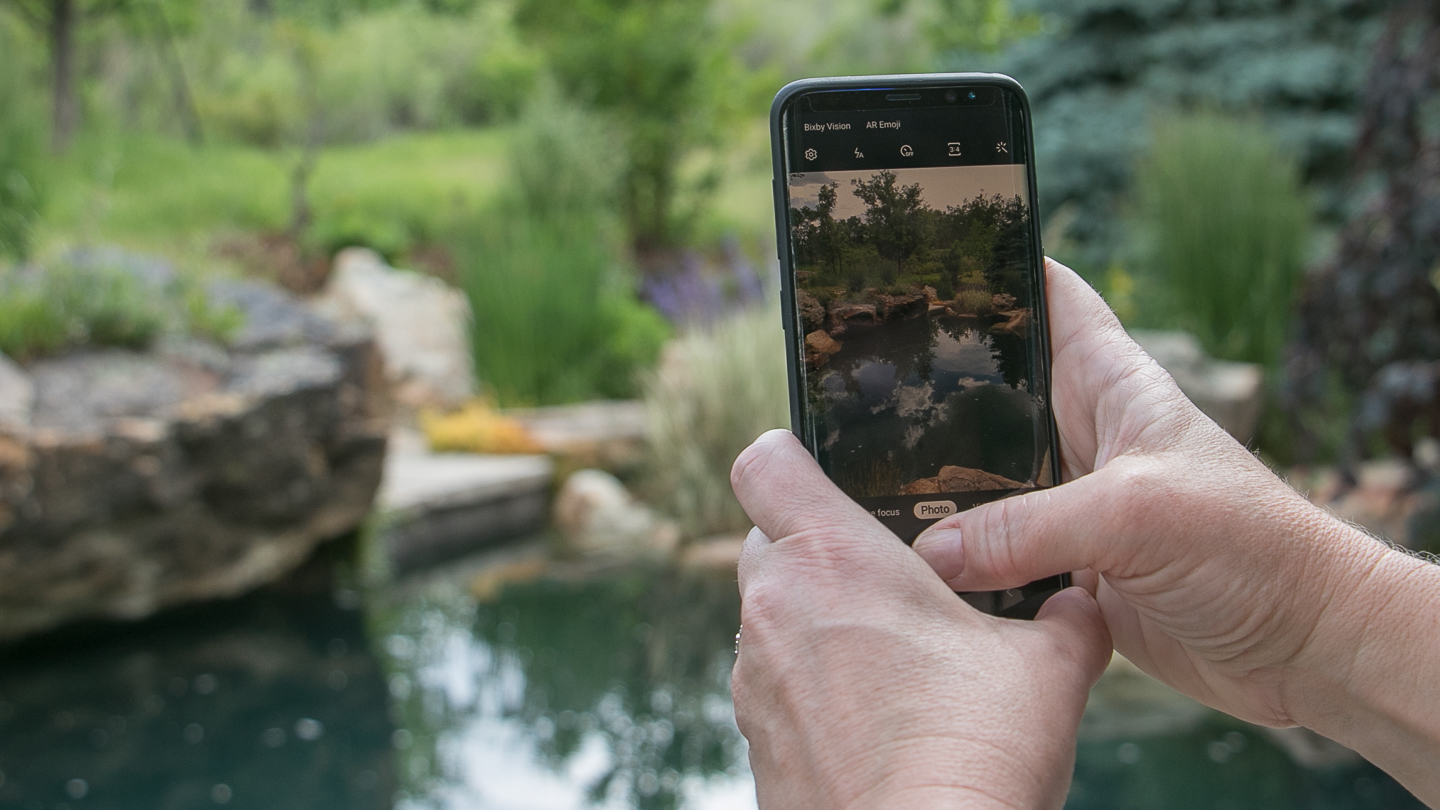A friend of mine asked me recently about the best ways to talk to people about plants.
I spend all day talking about plants, muffled through a mask, waving my arms to show people how tall something gets, or whether it is columnar or the branches are wild whips.
Somehow it is easier in person describing a plant, yet I do my best work by computer, scrunched over spreadsheets and drawing diagrams. I imagine how that garden will look, scribbling overlapping circles and making notes.
Turning circles and blobs into spheres and cones
With a great 2D computer program I can draw circles and blobs all day long. I scribble and color and squeeze their plant name codes. It’s not quite the groovy art of Piet Oudolf’s designs, but I get by. [Make sure you see the Five Seasons movie.]

When I present my drawings to a client, however, sometimes I get blank faces. My left-brain, which sees these straight lines and dashes of color on a paper as three dimensional plants that change over the season, it doesn’t quite translate.
For this client, I spent the week researching which were the best plants to use in her garden, based on the colors she likes (grey, lavender, and pale pink), and the availability of plants at the nursery, and then stretched my circles into tall plant forms:
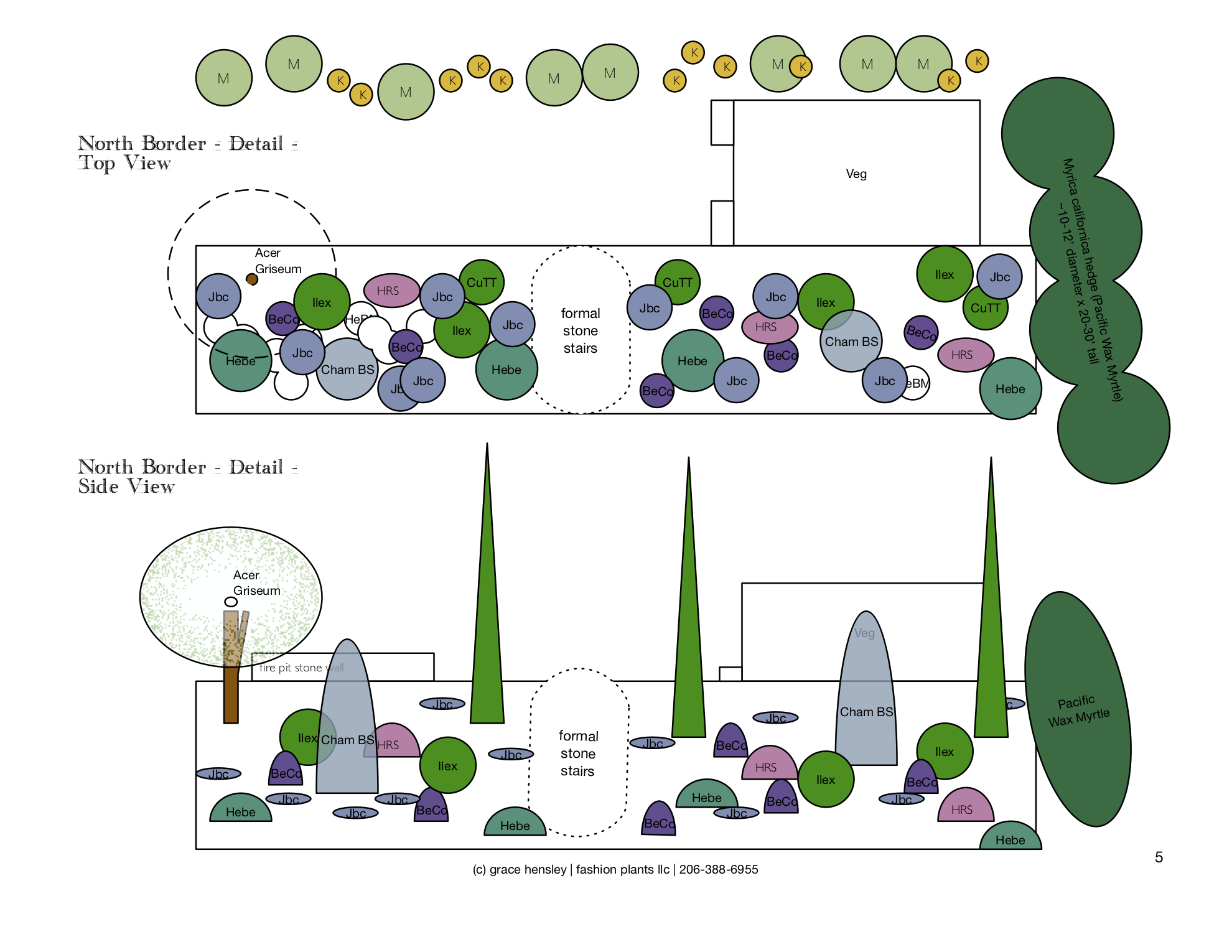
It still is a bit of a mish-mash, because of course, the garden isn’t white in those blank spaces; plants intermingle, mulch covers the ground. I suppose I could take a photo and draw beautiful plant forms right on the image; maybe one day I’ll take a garden drawing course. At present, the best I can do is scrape images from Google to create a look-book.
It is only now that those circles and blobs come alive.
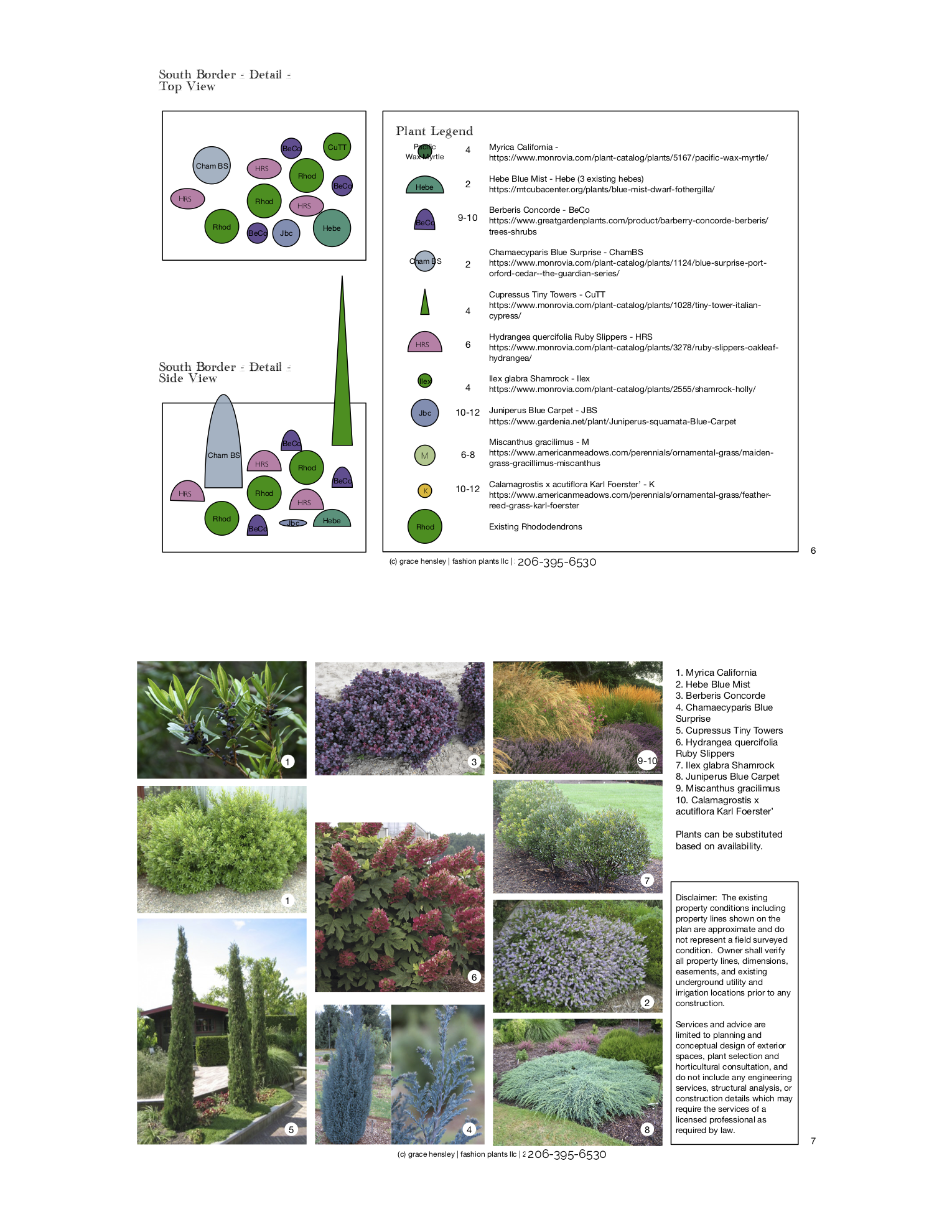
Visualization takes Imagination
When you work on a garden design, it is easy to get bogged down in this plant vs that one. Specifying one particular cultivar gets tricky because sometimes the nursery is out of that plant. You have to get comfortable making substitutions. If we specify a conical tree with a blue hue, Chamecyparis ‘Blue Surprise’ might not be available, but Pinus parviflora ‘Glauca’ could be, or maybe Abies pinsapo ‘glauca’, the blue Spanish Fir.
I keep a digital file of my favorite plants. It contains a lot of what others might call ‘boring plants’ but I would rather call them reliable. There’s a reason why they appear in the Great Plant Picks – these are readily available in Pacific Northwest garden centers. I always keep my eyes out for new cultivars of reliable plants to add a dash of excitement.
However, not everyone designs or installs their garden at the same time of year, nor are the plants we specify all available at once.
This is why you need to work with a designer.
A Garden Designer knows enough about plants to make substitutions on the fly, to exchange one cultivar for another. They know to get enough plants to fit into the space, yet not so many that you don’t account for plant growth. A designer will work out the details on how you are going to develop the garden. You don’t want to scrape everything bare, and not be able to get all of the plants at once, or even worse, pull them out because you planted that beautiful tree where the breakfast patio will go.
And so once again, I draw circles and squares on the page, to plan ahead for the teen hangout, or that perfect spot for coffee.
